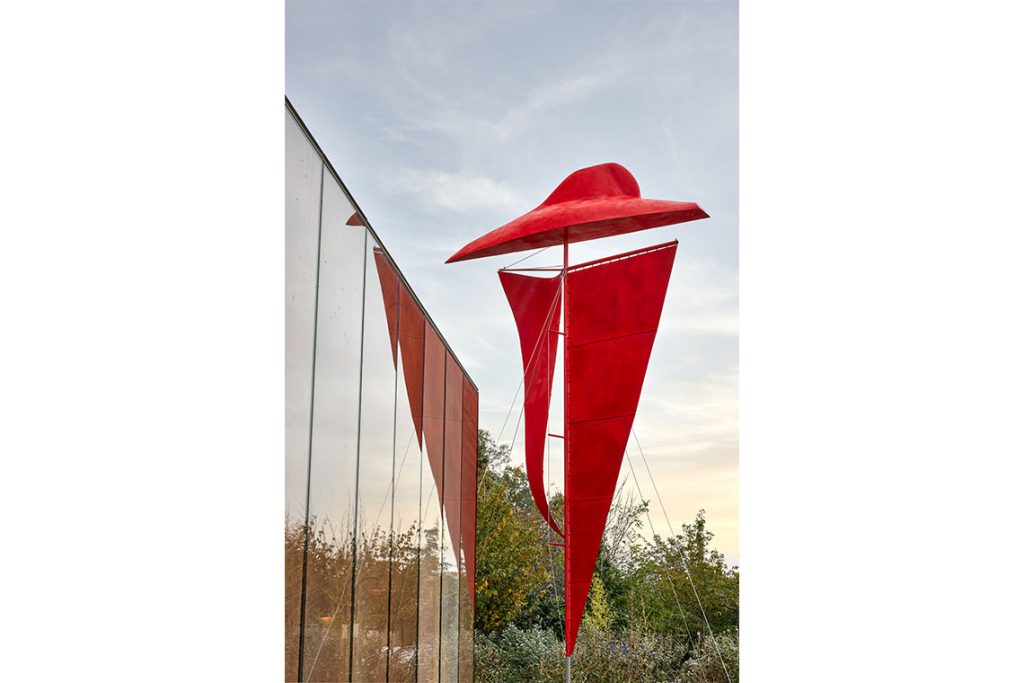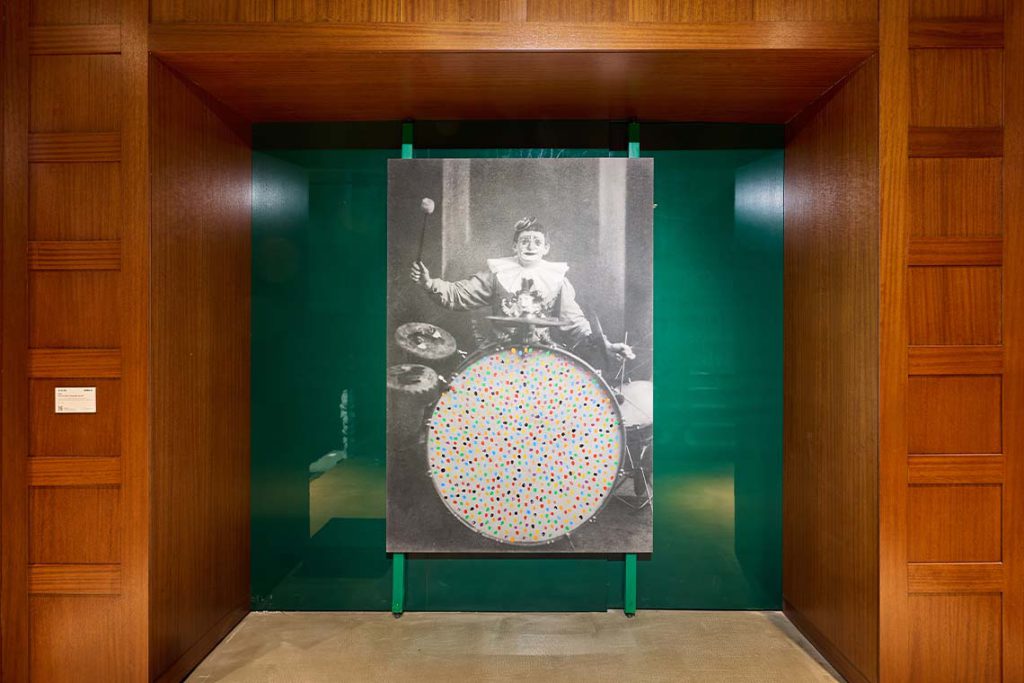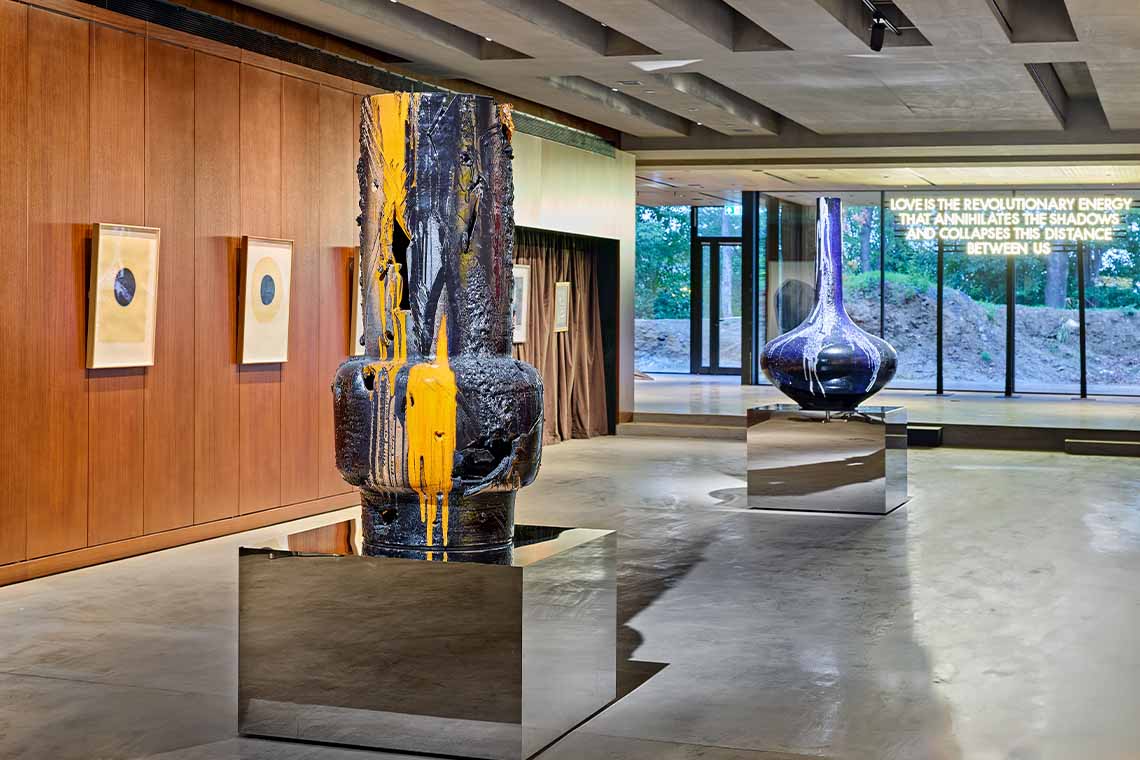The current exhibition, We Belong at Istanbul’74, proves the necessity of pluralism in building resilient, creative communities, while also demonstrating the strength of Istanbul’s contemporary art scene.
A capsized sailboat is poised to glide across the sky on a hillside overlooking Istanbul’s Bosphorus Strait. The eight-metre-tall Red Pill (2023) by Alper Aydın is as much a surreal work of art as it is a depiction of the detritus of the ever-more frequent floods that wreak havoc on the Turkish artist’s hometown along the Black Sea.
The site-specific sculpture of metal and fibreglass is a disorienting welcome to We Belong, a group exhibition exploring our basic human need for community. As forces like the pandemic, polarising politics and environmental degradation alter the ways in which we interact with each other and the world, the show asks whether art can still bind us.
The devastating earthquake that struck Turkey in 2023 compelled Aydın to look at whether those connections survive what he calls “the parameters of our reality”, with humanity part of a world that “we belong to it even after we disappear,” he says. “After a big deluge, everything turns upside-down. These are the scenes I am now confronted with.”
Aydın is among 28 artists in We Belong, presented by the independent culture and art platform Istanbul’74 in a cavernous former fitness studio that is slated to re-open as a private club. The expansive show traverses borders, media and decades, and includes a smattering of early Turkish modernists like Bedri Rahmi Eyüboğlu and Erol Akyavaş.

“The contemporary art community is always examining social issues under a microscope, but how do we turn that into action? I wanted to show that this sense of community can be a source of strength,” explains Demet Müftüoğlu Eşeli, creative director at Istanbul’74 and who curated We Belong.
At the end of a long corridor, one thesis for We Belong is declared in neon text by Scottish artist Robert Montgomery: “Love is the revolutionary energy that annihilates the shadows and collapses this distance between us.” A first edition of the installation was placed in the Tuileries Garden by the Louvre in Paris in 2021.
Two mirrored panels, wrapped in bands of coloured polyester film, are by the artist duo :mentalKLINIK (Faker, 2022) andreflect upon the viewer our alternating conditions: of belonging and disaffiliation, of involvement and alienation.
Hosting a show about inclusivity at an exclusive club was a challenge for Istanbul’74, which has organised free-admission festivals in the past, Müftüoğlu Eşeli highlights. She collaborated with eight Turkish galleries to bring diverse work to the exhibition, whichis open to the public by appointment, and hopes to start an artist residency as part of the club’s culture programme.
Among the handful of young Turkish artists in We Belong is Berke Yazıcıoğlu. The tapestry The Rite of Spring, Act I Scene 6 (2020) depicts storks in flight around a nuclear mushroom cloud, a dramatic rendering of Istanbul’s changing urban environment. The birds’ biannual migration through the city has been disrupted by a new airport that was built near their nesting grounds.

Another textile work is Skyscraper (2000) by pioneering ‘artkilim’ practitioner Belkis Balpınar. She reimagines the traditional geometry of an Anatolian carpet as a hulking edifice, now the prevailing Turkish motif amid a two-decade construction spree led by the government, which faced public ire over the collapse of tens of thousands of substandard buildings in the February 2023 earthquake.
Işıl Kapu uses the omnipresent material of cement in her totem pole of three interlocking figures in Untitled (2023). Resembling the prehistoric idols excavated at one of Turkey’s Neolithic sites, the figures blend into one and blur the line between the ancient and the contemporary. Strewn across a wide table like an archaeologist’s workbench are delicate ceramic vases that Turkish artist Burçak Bingöl has reformed by shattering and suspending or adhering to blocks of clay in an inversion of kintsugi, the Japanese method of repairing pottery. Like Red Pill, Plateau (2017) contends an object’s beauty still resonates even amid its destruction.
Two oversized ceramic sculptures (2017, 2023) by Berlin-based Anselm Reyle dot the hall, and conceptual artist Sarkis is recognisable in the multitude of colourful fingerprints that embellish a black-and-white photograph in Timbres from Rainbow (2019). Richly textured paintings (2016–23) by Mexican artist Bosco Sodi on linen, canvas and urushi panel have all the vividity of a Rothko or Pollock.
At the heart of the show is a massive video of Ekin Bernay’s Resilient Responses, created during the pandemic in 2021 as an online performance for the Tate Modern in London. On a screen partially obscured by a silk parachute, Bernay moves slowly through a locked-down museum, at times tethered by ropes. Her response to the social isolation of the pandemic is a form of resistance, urging us to follow our own “inner map” when faced with the sudden loss of community. The artist is very much alone, and yet her art deeply connects with and among her audience.



